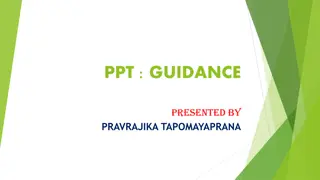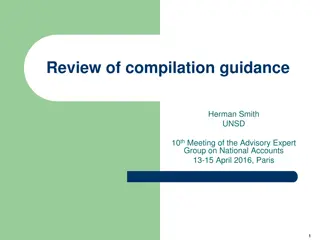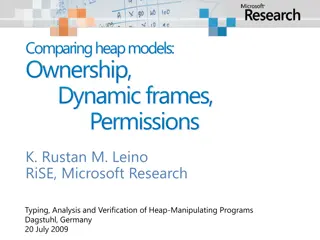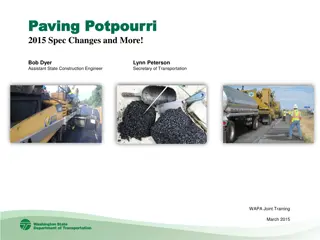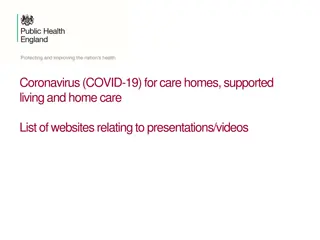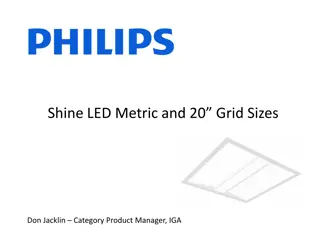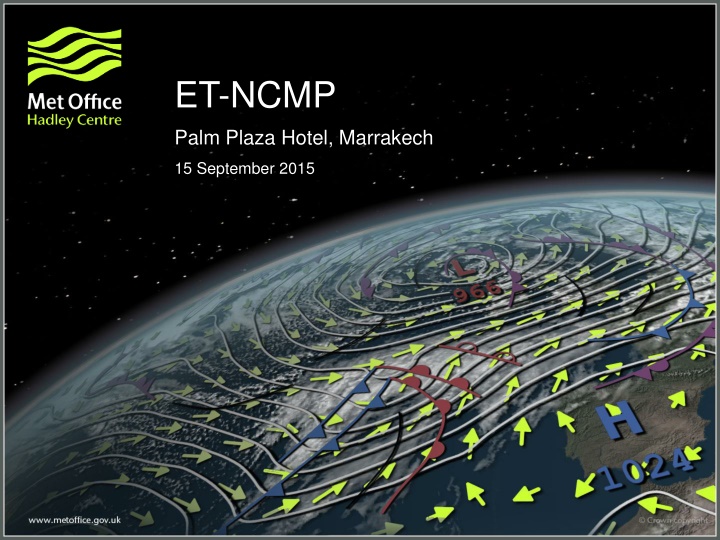
Advanced Guidance for NCMP Calculation and Quality Control
Explore detailed instructions, indices, and methodologies for calculating NCMP from scratch, targeting individuals with expertise in math, statistics, and programming. Learn about the overlap with ETCCDI indices and the importance of quality control using R Climdex.
Download Presentation

Please find below an Image/Link to download the presentation.
The content on the website is provided AS IS for your information and personal use only. It may not be sold, licensed, or shared on other websites without obtaining consent from the author. If you encounter any issues during the download, it is possible that the publisher has removed the file from their server.
You are allowed to download the files provided on this website for personal or commercial use, subject to the condition that they are used lawfully. All files are the property of their respective owners.
The content on the website is provided AS IS for your information and personal use only. It may not be sold, licensed, or shared on other websites without obtaining consent from the author.
E N D
Presentation Transcript
ET-NCMP Palm Plaza Hotel, Marrakech 15 September 2015
Overview NCMPs Rationale Calculation of indices Interpolation Formats, data and metadata
Who is the guidance aimed at? The guidance is aimed at the people who will have to calculate the NCMP from scratch. It implies some familiarity with Maths statistics and programming Needs to be detailed enough that anyone who has that familiarity can code it It s distinct from a manual for working the software, which we would also need
NCMP short list 1. Mean temperature anomaly, area-averaged 2. Percentage of normal rainfall, area-averaged 3. Standardised Precipitation Index, area-averaged 4. Number of days with Tmax > 90th percentile, area-averaged 5. Number of days with Tmin < 10th percentile , area-averaged 6. Indicator for extreme events
Mean conditions 1. Mean temperature anomaly, area-averaged 2. Percentage of normal rainfall, area-averaged 3. Standardised Precipitation Index, area-averaged 4. Number of days with Tmax > 90th percentile, area-averaged 5. Number of days with Tmin < 10th percentile , area-averaged 6. Indicator for extreme events
(More) extreme conditions 1. Mean temperature anomaly, area-averaged 2. Percentage of normal rainfall, area-averaged 3. Standardised Precipitation Index, area-averaged 4. Number of days with Tmax > 90th percentile, area-averaged 5. Number of days with Tmin < 10th percentile , area-averaged 6. Indicator for extreme events
Overlap with ETCCDI Aim was to use ETCCDI and related indices (Tx90p, SPI) These are already widely used, understood and scientifically useful Possibility of sharing code, workshops Two-way sharing: NCMPs could be mechanism for regular updates of ETCCDI indices
Quality control Possibly use R Climdex for this Need to assess homogeneity also (RH Test) We will discuss these later, but we do need to ensure that quality control is thought about and, ideally, performed on the data
Interpolation Need some way to average across a country Proposal was to use Ordinary Kriging onto a regular grid Kriging is the name for a family of interpolation techniques which have various nice properties Best Linear Unbiased Estimator (given certain assumptions) Works reasonably well even when the assumptions are not perfectly adhered to
Formats Need NCMP value, country ID, year, month Metadata including: Version of the software Number of stations Base period Quality/homogeneity flag Focal point contact Needs to disseminate whole data set and updates Eventually aim for BUFR for transmission, with a more human format for general use.
Structure of guidance document Introduction Rationale for NCMPs Base periods, limitations, strengths Method for generating the products QC Calculating the station indices Calculating the variogram Kriging/interpolation Averaging the index Updates, monthly and annual Dissemination Q&A



